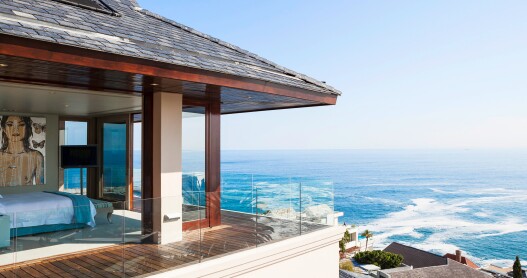Overview
When’s the best time to go to Ireland?
One of the favorite topics of conversation in Ireland is the weather, which largely determines the best time of year to visit. Be prepared for any weather at any time—and for a detailed conversation with a local about it.
The best time to visit is between May and July, when temperatures are at their warmest and days are longest. July and August make up the high season, when prices are steepest and accommodations and attractions busiest.
Spring, particularly from March onward, and autumn (particularly September) are pleasant; attractions will be less busy and prices good.
The weather can be unpredictable even in summer, so always be prepared for a chilly breeze or shower of rain. Other busy times of year include St Patrick’s Day (March 17), Easter, school holidays, and bank holiday weekends.
In winter, many attractions, hotels, and restaurants close from December to February, when weather is harsh and days are short. But if you do travel then, you can get good deals, and tourist attractions (when open) will be quieter.
How to get around Ireland
Direct flights from Britain, Europe, and the USA arrive at the main hub, Dublin Airport. There are also airports in Shannon, Cork, Knock, and Belfast—and smaller regional airports such as Donegal and Sligo. The main airlines operating flights between Britain and the Republic of Ireland are Aer Lingus and Ryanair. It is also possible to ferry from Britain or France, sailing into Dublin, Rosslare, or Cork. The main operators are Irish Ferries, Stena Line, P&O, Brittany Ferries, and Norfolk Line Ferries.
Distances are not huge, and highways link the main cities. Car rental is readily available and is recommended for sightseeing for at least some of your trip, as it allows you to go to the more interesting places and stop off when you want. Note that car rental and fuel can be expensive (book ahead in high season). Other options include trains, which link the larger cities and are usually reliable, and intercity buses, which serve the main towns and cities. Many private bus companies operate on these routes, too. There are flights between Dublin and all of the regional airports. Drivers drive on the left side of the road in Ireland, and some rural and coastal roads can be narrow.
Food and drink to try in Ireland
The quality of the meat and seafood stands out in Ireland. You can eat very well here, as Ireland has plentiful gourmet restaurants, innovative chefs, and ethnic cuisines, particularly in larger urban centers, and most towns have a farmers’ market for fresh produce. Tuck into seafood, Irish cheeses, Irish stews, and breads. The traditional breakfast—a fry-up with bacon, sausages, eggs, tomatoes, black-and-white pudding, and brown bread—can be found in most hotels. Lunch often centers around soup and sandwiches or sliced, cooked meats. Watch for “early bird” dinner specials in restaurants—typically, these are two to three courses at a special price, served before 7 p.m. Most pubs serve food, and prices are good.
Culture in Ireland
Some of the oldest cultural highlights in Ireland include the Neolithic passage tomb at Newgrange (which, dating to 3200 B.C., is older than the Pyramids or Stonehenge) and the Book of Kells, which dates to 800 A.D. Everywhere you go in Ireland you’ll encounter music, dance, the performing arts, and literary festivals. Ireland has produced nine Nobel laureates including Seamus Heaney, Samuel Beckett, George Bernard Shaw, and W.B. Yeats. It’s also the home of U2 and Riverdance. You’ll find traditional music sessions in pubs in nearly every town. The Irish-speaking areas in the country—known as Gaeltacht areas—are mostly in the west and northwest and there are Irish language TV and radio channels. For sports, the traditional pastimes of Gaelic football and hurling (played with a stick) are played in hundreds of Gaelic Athletic Association (GAA) clubs all around the country.
The biggest annual festivals include St Patrick’s Day (March 17), when most towns have a parade and festival, the Galway Arts Festival (July), Cork Jazz Festival (October), Dublin Theatre Festival (September/October), Jameson Dublin International Film Festival (February), Galway Oyster Festival (September), and West Cork Food Festival (September). And most Irish towns have their own annual festival, usually during summer. Fair Day, on August 15, has been an annual festivity for at least two hundred years. Kenmare is one of the few remaining Irish towns that continue to honor the tradition. It’s the one day when farmers and animal owners can bring their cattle, horses, sheep, chickens, ducks, and donkeys to the town square to sell or trade in the streets. Over time the fair has grown to include stalls where all manner of other goods and services are sold—from antiques and bric-a-brac to fortune-telling.
Local travel tips for Ireland
- The currency in Ireland is the euro.
- Tipping is discretionary and is usually around 10 percent in restaurants and for table service in pubs.
- Travel in Ireland is usually safe, although beware of pickpockets and thefts from cars, especially in urban centers. The police are called the Gardaí, and the telephone number for emergency services is 999.
- As stated above, always be prepared for a sudden change in weather—a raincoat and sweater will come in handy, even during the summer season.
Guide Editor
Yvonne Gordon is an award-winning travel and features writer based in Ireland.








